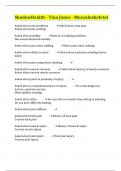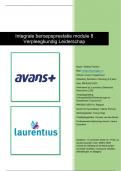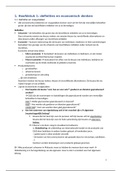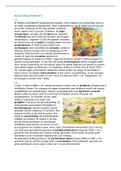Class notes
APUSH Notes Ch. 1-26 (Give Me Liberty! textbook)
- Course
- Institution
DETAILED notes summarizing Chapters 1-26 of the Give Me Liberty! (7th edition) textbook by Eric Foner.
[Show more]Some examples from this set of practice questions
1.
Tenochtitlán
Answer: capital of Aztec empire
2.
Aztecs
Answer: written language, complex irrigation, human sacrifice
3.
Maya
Answer: yucatan peninsula, giant stone temples, complex irrigation
4.
Inca
Answer: cultivation of fertile mountain valleys
5.
Great League of Peace
Answer: Mohawk, Oneida, Cayuga, Seneca, Onondaga brought period of stability to area
6.
Reasons for euro exploration
Answer: population increase, political unification, desire for luxury goods
7.
Caravel
Answer: Caravel
8.
Reconquista
Answer: \"reconquest\" of Spain from the Moors, African Muslims who occupied part of Iberian Peninsula
9.
Conquistadores
Answer: Spanish who took the lead in exploration and conquest inspired by God, Gold, and Glory
10.
Columbian Exchange
Answer: transatlantic flow of goods and people

Stuvia customers have reviewed more than 700,000 summaries. This how you know that you are buying the best documents.

You can quickly pay through credit card or Stuvia-credit for the summaries. There is no membership needed.

Your fellow students write the study notes themselves, which is why the documents are always reliable and up-to-date. This ensures you quickly get to the core!
You get a PDF, available immediately after your purchase. The purchased document is accessible anytime, anywhere and indefinitely through your profile.
Our satisfaction guarantee ensures that you always find a study document that suits you well. You fill out a form, and our customer service team takes care of the rest.
Stuvia is a marketplace, so you are not buying this document from us, but from seller bridgetgray. Stuvia facilitates payment to the seller.
No, you only buy these notes for $9.99. You're not tied to anything after your purchase.
4.6 stars on Google & Trustpilot (+1000 reviews)
65040 documents were sold in the last 30 days
Founded in 2010, the go-to place to buy study notes for 15 years now








